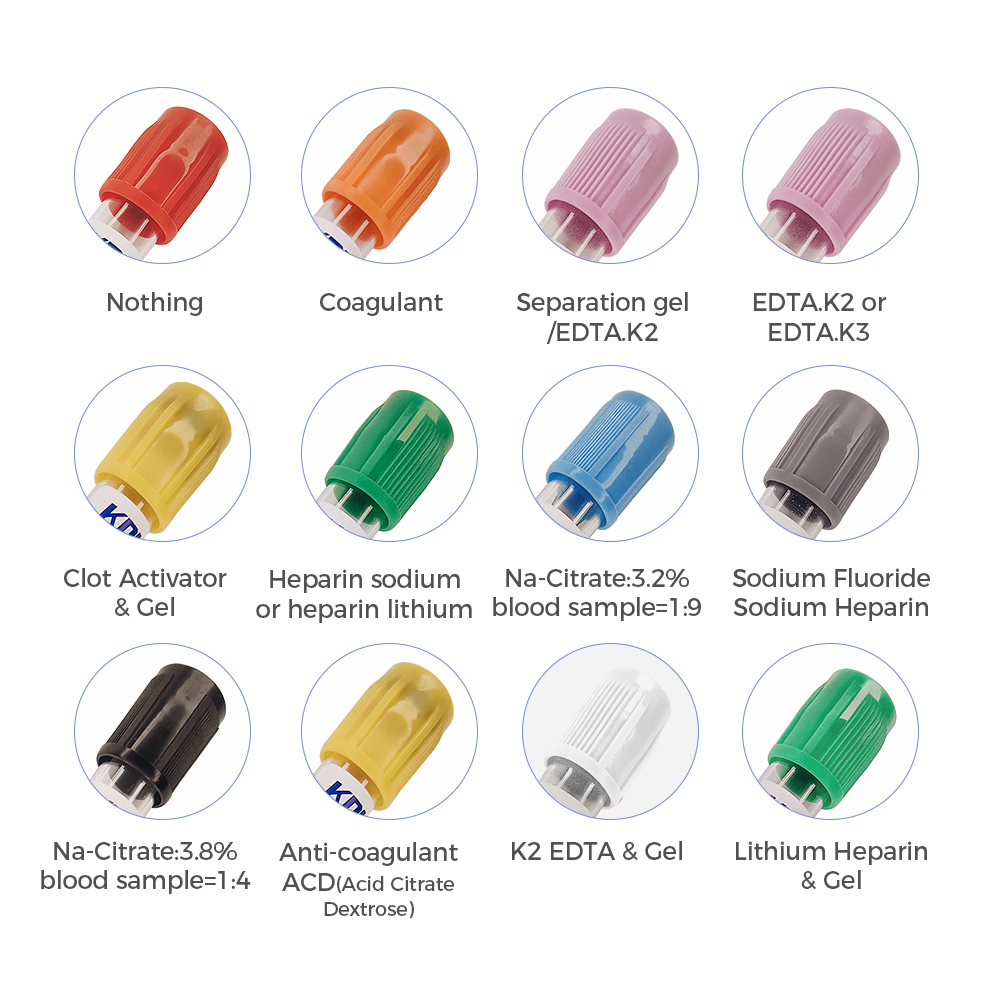
When it comes to medical testing, one of the most important tools used by healthcare professionals are lab tubes. From blood samples to urine tests, these simple yet essential items play a vital role in ensuring accurate and timely results. But, if you’re not familiar with medical lab tubes, understanding their different types, uses, and proper handling might feel overwhelming.
This ultimate guide will break down everything you need to know about medical lab tubes, from their different types and materials to how it is use in various medical testing procedures.
What Are Lab Tubes?
Medical lab tubes, also known as specimen collection tubes or blood collection tubes, are cylindrical containers use to collect, store, and transport samples for laboratory testing. Manufacturers most commonly make them from glass or plastic, and they primarily serve to hold various biological specimens, such as blood, urine, and saliva, for analysis in medical labs.
While they may look like simple tubes, they are design with specific functions in mind. The different colors of the tubes, the additives inside them, and the tube size all significantly influence the type of test they are use for.
Why Are Medical Lab Tubes Important?
Medical blood collection tubes are essential for gathering accurate and reliable test results. Engineers carefully design these tubes to preserve the integrity of the sample, minimize contamination, and ensure consistent results. Their use covers everything from routine blood tests to more specialized tests, such as genetic screening, blood cultures, and hormone level monitoring.
Without these tubes, testing would be inefficient, and the results might not be as reliable, leading to potential misdiagnoses. The proper use of medical lab tubes helps healthcare providers deliver the best possible care for patients.
Types of Laboratory Blood Test Tube Colors and Their use
There are many different types of lab tubes, each designed for a specific type of test or specimen. The most common types of medical lab tubes are:

1. Red-Top Tubes (No Additive)
Laboratories typically use these tubes when tests do not require additives. They often collect blood samples for tests like blood typing or for serum collection. The lack of additives allows the blood to clot, which is necessary for separating the serum from the cells.
- Common Uses: Blood typing, serum collection, certain immunology tests
- Additives: None
2. Blue-Top Tubes (Sodium Citrate)
Blue-top tubes contain sodium citrate, which acts as an anticoagulant. Clinicians often use these tubes for coagulation studies, which assess how well blood clots.
The sodium citrate in the tube prevents the blood from clotting too quickly.
- Common Uses: Coagulation studies, PT, aPTT, and INR tests
- Additives: Sodium citrate (anticoagulant)
3. Green-Top Tubes (Heparin)
Green-top tubes contain heparin, another anticoagulant. These tubes are used for various blood tests that require plasma collection. Heparin helps to prevent clotting, making it useful for tests like cholesterol measurements and blood gases.
- Common Uses: Plasma collection, blood gas analysis, cholesterol tests
- Additives: Heparin (anticoagulant)
4. Yellow-Top Tubes (ACD or SPS)
Yellow-top tubes are used for blood cultures or for collecting specimens for DNA studies. There are two types of yellow-top tubes: one contains Acid Citrate Dextrose (ACD) for cellular studies, and the other contains Sodium Polyanethol Sulfonate (SPS) for blood cultures.
- Common Uses: Blood cultures, DNA testing, tissue typing
- Additives: ACD or SPS
5. Purple (Lavender)-Top Tubes (EDTA)
These tubes are filled with EDTA, an anticoagulant that binds calcium to prevent clotting. Purple-top tubes are commonly used for complete blood counts (CBC), hemoglobin A1c tests, and other hematology tests. The EDTA preserves the blood sample’s cellular components, ensuring accurate results.
- Common Uses: Complete blood count (CBC), blood banking, hematology tests
- Additives: EDTA (anticoagulant)
6. Grey-Top Tubes (Sodium Fluoride)
Grey-top tubes contain sodium fluoride, which is use for preserve glucose levels in blood samples. These tubes are often use in tests that require accurate glucose measurements, such as diabetes screenings.
- Common Uses: Glucose testing, lactic acid testing
- Additives: Sodium fluoride (glucose preservative)
7. Black-Top Tubes (Sodium Citrate)
Black-top tubes are similar to blue-top tubes but are often use for specific tests like the Erythrocyte Sedimentation Rate (ESR). These tests measure how quickly red blood cells settle at the bottom of a test tube and are commonly use to monitor inflammation in the body.
- Common Uses: ESR (Erythrocyte Sedimentation Rate)
- Additives: Sodium citrate (anticoagulant)
8. Pink-Top Tubes (EDTA)
Pink-top tubes is use in blood banking and crossmatching tests. They contain EDTA, which is a strong anticoagulant, and is use to collect samples for compatibility testing before blood transfusions.
- Common Uses: Blood typing, crossmatching for blood transfusions
- Additives: EDTA (anticoagulant)
Lab Tubes Additives: What You Need to Know
As mentioned earlier, some lab tubes come with additives inside them, and these additives play a critical role in preparing the sample for testing. These additives are generally classified into the following categories:
- Anticoagulants: These substances prevent the blood from clotting and are essential for tests that require plasma or whole blood. Common anticoagulants include EDTA, heparin, and sodium citrate.
- Clot Activators: These substances speed up the clotting process and are typically used when serum is required. Common examples include silica particles and glass beads.
- Preservatives: Researchers use these tubes to preserve specific substances in the sample, such as glucose in the blood. One common preservative, sodium fluoride, prevents the breakdown of glucose.
- Gel Separators: Some tubes, particularly those for serum or plasma collection, contain a gel separator. This gel helps to separate the serum or plasma from the cellular components of the blood after centrifugation.
How to Properly Handle and Store Lab Tubes
The correct handling of lab tubes is essential to ensure accurate test results. Here are some important tips for handling and storing high-quality lab blood collection tubes:
- Label the Tubes Correctly: By including the patient’s name, date of collection, and any other relevant information. This practice helps prevent errors and ensures that the lab tests the sample appropriately.
- Use the Correct Tube for the Test: Make sure to use the correct type of tube for the specific test being performed. Using the wrong tube can lead to inaccurate results or contamination of the sample.
- Store Samples Properly: After collecting a sample, it’s crucial to store it properly. Some samples may need to be refrigerated or kept at room temperature, depending on the type of test.
- Avoid Contamination: Ensure that the sample does not come into contact with contaminants. This could affect the accuracy of the test results.
- Follow the Correct Order of Draw: When collecting blood from a patient, always follow the correct order of draw to prevent contamination between tubes, especially when additives are involved.
Conclusion
Medical lab tubes may seem like simple tools, but they play a critical role in the world of healthcare. By understanding the different types of tubes, their uses, and the role of additives, you can appreciate how crucial these tubes are in providing accurate diagnostic results.
Whether you’re a healthcare professional, a patient, or just someone curious about the process, knowing more about lab tubes can help demystify the complex world of medical testing. Proper handling, correct tube selection, and adherence to best practices ensure that patients get the best care possible based on their test results.
If you’re looking to best Laboratory blood test tube manufacturer for your clinic or lab, Choose KDL Blood Collection Tubes that are design with advanced manufacturing standards to ensure accuracy, safety, and compatibility with a wide range of diagnostic equipment.
 +86-791-8686-1216
+86-791-8686-1216 

